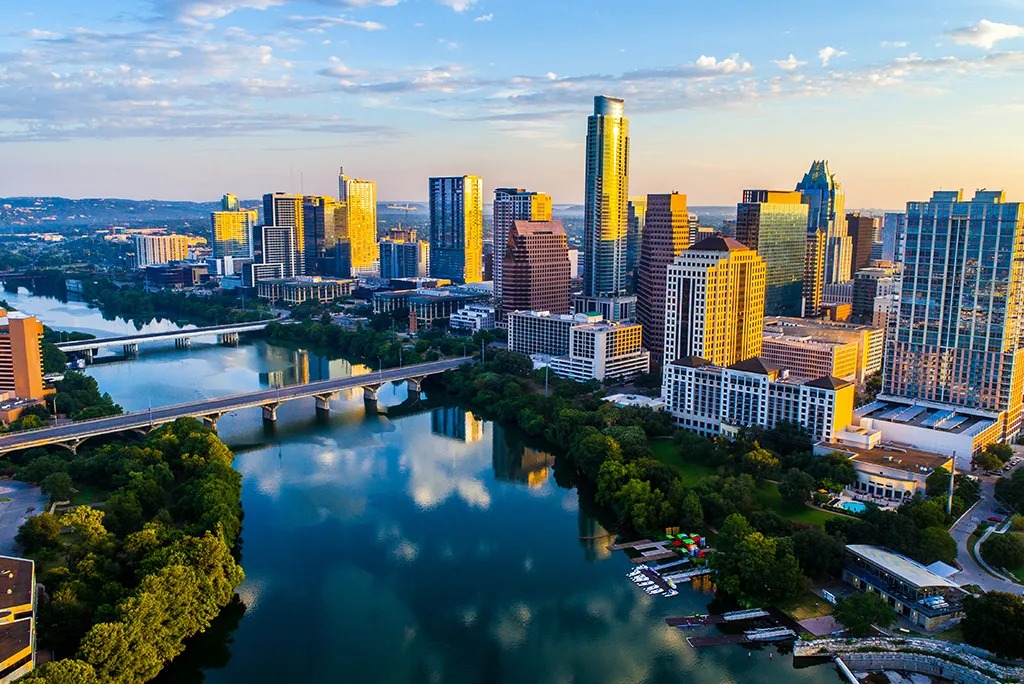Thinking about moving to Texas for work? You’re not alone. Texas is one of the top spots for foreign workers in the US, thanks to its job market and no state income tax. But before you pack your bags, it’s smart to look at what it really costs to live there. From housing to healthcare, and everything in between, the cost of living in Texas can be pretty different depending on where you settle and what kind of work you do. Here’s a look at what you should know if you’re considering making Texas your new home.
Key Takeaways
- Texas attracts lots of international workers, but living costs can vary a lot from city to city and between urban and rural areas.
- Housing is generally more affordable than in many other states, but property taxes are higher, and rents in big cities are rising.
- Foreign workers in Texas often earn less than locals at first, especially if their skills or education don’t transfer right away.
- Texas has no state income tax, which helps your paycheck go further, but you’ll need to budget for healthcare, transportation, and sometimes higher utility costs.
- Visa rules can affect your job flexibility and moving costs, so it’s important to plan ahead and understand all the possible expenses.
Overview of the Cost of Living in Texas for Foreign Workers
Texas has become a magnet for people moving from outside the US and within the country, looking for solid job prospects and a different pace of life. Compared to some other states, many expats and immigrants see Texas affordability as a key draw—though it’s definitely not the same everywhere, or for everyone. If you’re thinking about making the big move, here’s what you should know about living expenses in Texas for immigrants and what your wallet can expect.
Texas as a Popular State for International Migrants
- Texas regularly ranks among the top destinations for new arrivals from overseas, with a particular influx from Mexico, Central America, India, and China.
- Many international workers end up in big cities like Houston, Dallas, Austin, or San Antonio, thanks to major employers and diverse communities already established there.
- Over the last decade, Texas has seen a young, working-age population grow as more migrants arrive in search of career opportunity and stability.
- The mix in skills means some end up in tech and management, while others take jobs in manufacturing or food service.
Impact of Migration Trends on Living Costs
- Texas tends to attract young adults—the majority of new foreign workers are between 20 and 39 years old—which is good for the local job market but can put pressure on rents and services as population grows.
- International newcomers earn less on average compared to locals:
| Group | Median Annual Wage ($USD) |
|---|---|
| Texas General Population | 36,080 |
| Domestic Migrants | 32,779 |
| New International Migrants | 23,233 |
- Because many foreign workers are younger or still gaining US work experience, wages can be lower at first.
- Sudden spikes in migration, like after pandemic slowdowns, might impact rental and housing costs, especially in urban areas.
Comparison to National Averages
- Texas affordability for expats actually stacks up well next to the country as a whole, but there’s a lot of variation:
- Some Texas cities (like San Antonio) have a cost of living nearly 9% below the national average.
- On the flip side, spots like Dallas run about 2% more expensive than the US average.
- No state income tax in Texas, so more of your paycheck stays with you.
- Here’s a quick look at how Texas compares to US averages in a few key areas for foreign workers:
| Expense Category | Texas Average | US National Average |
|---|---|---|
| Monthly Rent (1BR Apt) | $1,200 | $1,350 |
| Grocery Bill (Monthly) | $325 | $355 |
| Utilities (Monthly) | $150 | $170 |
- But remember, housing costs for foreign workers vary—Austin and Houston are no longer the bargains they were ten years ago, though rural or small-town Texas is still pretty affordable.
If you come to Texas for opportunity, the state offers some good deals and steady economic growth. But understanding the real picture means looking past averages to see what’s happening in the city or town you’re aiming for—and keeping an eye on changing migration patterns, which do impact the bottom line.
Housing Costs and Affordability Across Texas
Housing is often the biggest monthly cost for foreign workers setting up in Texas. Where you choose to live—big city, suburb, or a quieter rural town—makes a huge difference to your budget.
Differences Between Major Cities and Rural Areas
Here’s the reality: Texas is a big state, and the cost of shelter shifts a lot across different places. For example:
| City/Town | Median Rent (1BR, 2025) | Median Home Price (2025) |
|---|---|---|
| Austin | $1,700 | $445,000 |
| Dallas | $1,450 | $390,000 |
| Houston | $1,350 | $350,000 |
| San Antonio | $1,200 | $305,000 |
| Lubbock (rural) | $930 | $205,000 |
A few things to note:
- Housing is priciest in booming cities like Austin.
- Rural towns and small metros have much lower rents but don’t offer as many jobs or services.
- Some suburbs offer a balance—lower costs, but still close enough to big city jobs.
Rental Market Trends and Challenges
Renting is the most common option for new arrivals, but even that has its hurdles:
- Rental prices have gone up by as much as 20% in some popular cities since the pandemic.
- It’s common for landlords to ask for proof of employment or several months’ rent upfront—extra tricky if you don’t have a US credit history yet.
- Competition can be fierce in places with fast population growth, so it pays to start looking early.
Considerations for Homeownership and Property Taxes
- Texas homes aren’t as expensive as in California or New York, but property taxes are much higher than many folks expect. Property taxes here often make up for the lack of state income tax.
- Typical property tax rates run 1.5% to 2.5% of your home’s value—sometimes hundreds of dollars per month, even for a modest house.
- Foreign workers who dream of owning a place will need to save for:
- Home loans can be harder to access if you don’t have US credit or a green card, though some lenders cater specifically to foreign buyers.
In summary, while housing in Texas is still cheaper than many coastal states, there are wide differences across regions. Being flexible about location, and staying on top of market changes, will help foreign workers find something that fits their needs—and their paycheck.
Income and Employment Opportunities in Texas
When it comes to working in Texas as a foreign worker, there’s a lot to know about how much you can expect to earn, which jobs are most available, and how easy (or tough) it is to actually find a job. Texas has built its reputation on solid job growth, drawing people from overseas and other states. But the exact opportunities and pay can vary pretty widely depending on your skills, industry, and where you settle in the state.
Typical Wages for Foreign Workers
Wages for international workers in Texas argue with a few factors, like education, job type, and experience. There’s a pretty significant gap between what the average Texan earns and what new arrivals make, at least at first. Here’s a quick look at recent numbers:
| Worker Group | Median Annual Salary (USD) |
|---|---|
| Texas Population Average | $36,080 |
| Domestic Migrants | $32,779 |
| International Migrants | $23,233 |
Why is there such a gap? A lot of it comes down to experience, recognition of foreign credentials, and the type of jobs new arrivals initially land. Many international workers also tend to be younger and haven’t reached peak earning years. And, not all degrees or skills transfer smoothly to the US job market.
Key Industries Employing International Migrants
Texas isn’t just all oil and boots—in fact, it’s got a pretty eclectic job market for foreign workers. Here are some of the main fields where international workers land jobs:
- Energy (oil and gas, renewables)
- Construction and skilled trades
- Healthcare (nurses, lab techs, aides)
- Manufacturing and production
- STEM—especially IT and engineering
- Education and research (university roles, K-12 teaching)
- Food services and hospitality
Demand is particularly high for healthcare professionals and skilled trades. For folks with advanced degrees, you’ll find opportunities in tech, science, and teaching, though credential transfer can be a hassle.
Job Market Factors and Unemployment Rates
The Texas job market can be pretty welcoming to new arrivals, but there are some hurdles. On one hand, the unemployment rate in Texas usually sits a notch below the national average, thanks to rapid economic growth and a young labor force. But:
- Many foreign workers start in roles that don’t fully use their experience or education.
- Landing a first job often takes longer if you come to Texas without something lined up in advance.
- Some groups—especially women caring for young children—are less likely to enter the workforce right away.
On the bright side, there’s no state income tax in Texas. That means every penny of your paycheck goes a bit further, helping offset the sometimes slow start that new international workers face while settling in. Before you move, though, it’s worth reaching out to local support groups and job agencies—networking is often the fastest route into better-paying jobs here.
Essential Living Expenses for Foreign Workers
Figuring out how much you’ll spend on everyday expenses in Texas can feel overwhelming, especially if this is your first move to the US. Texas draws in people from all over the world, but it’s important to plan ahead. Things like utilities, getting around, healthcare, and childcare can shape your monthly budget in ways that surprise you if you’re used to prices elsewhere. Below, let’s break down where most of your money will likely go.
Average Cost of Utilities and Transportation
Utility costs in Texas depend a lot on where you live and how much you use — summers can push air conditioning bills very high. On average, a typical apartment’s monthly bill (which includes electricity, heating, cooling, water, and garbage) can run between $130 and $250. Adding internet? That’s usually another $50–$70 per month. Here’s a small table for a basic snapshot:
| Expense Type | Average Monthly Cost (USD) |
|---|---|
| Electricity, Heating, Water | $130 – $250 |
| Internet | $50 – $70 |
Public transportation is decent in larger cities like Dallas or Houston, but in smaller towns, you’ll need a car. Monthly public transit passes range from $50–$100 in bigger cities. Owning a car comes with extra costs — think insurance, gas, and maintenance. Gas prices tend to be lower than the US average, but insurance varies widely based on your driving history and where you live. In Dallas, for instance, monthly costs for a single person hover around $1,253 before rent, which includes utilities and basic transportation.
Healthcare and Insurance
The US healthcare system works differently from many other countries, and Texas is no exception. If you don’t have employer-sponsored insurance, you’ll have to buy your own or see if you qualify for government assistance. Monthly premiums for an adult can range from $200 to $500, depending on coverage and your age. Out-of-pocket costs — doctor’s visits, prescriptions, and emergencies — add up fast. Always check if your employer offers health insurance, and pay close attention to deductibles and what’s actually covered.
When planning for healthcare, consider these steps:
- Research employers that offer health benefits, especially if you have a family.
- Look into state programs if you fall below certain income thresholds.
- Ask other international workers for recommendations on affordable clinics or co-ops.
Education and Childcare Considerations
If you’re moving with kids, schooling and childcare are going to be big ticket items. Texas has a wide range of public schools, which are free, but where you live can impact the school quality. Private schools, on the other hand, can cost anywhere from $7,000 to $20,000 per year.
For children under school age, daycare and preschool fees also stack up fast. Average monthly costs might run from $500 to $1,000 per child, depending on the city and the type of facility. Some employers (especially in the medical field) offer childcare subsidies, but this isn’t guaranteed everywhere.
Here are some main points to keep in mind:
- If you need daycare, get on waiting lists early — spots can fill up months ahead.
- Public schools are free, but enrollment often depends on your address.
- Some international communities have their own cultural or language-specific schools, but these sometimes cost extra.
All up, Texas isn’t the most expensive state for day-to-day living, but the range in costs from city to city and the variability of things like health insurance make it wise to get all the details before you move. Planning ahead goes a long way toward keeping your Texas adventure on budget.
Lifestyle Factors Influencing the Cost of Living in Texas
Exploring how much does it cost to live in Texas isn’t just about rent or groceries—foreign workers need to think about the everyday details that shape monthly budgets. Lifestyle factors can impact the average monthly expenses in Texas in ways that often go overlooked. Here’s a breakdown of key points:
Diversity and Community Support
Texas is well known for its mix of cultures. You’ll find vibrant international communities, especially in big cities like Houston and Dallas. For newcomers:
- Community support networks help with job leads and settling in.
- There are plenty of local organizations for international workers.
- Cultural events and festivals can offer a taste of home, but visiting or participating can sometimes bring extra costs.
For many, being near people with a similar background reduces stress and expenses related to adapting—like language classes or finding particular foods and services.
Climate and Regional Differences
Weather shouldn’t be overlooked when you think about average monthly expenses in Texas. Summers can be blazing hot, especially in places like Dallas and Austin. Winters are mild in the south, but up north, there are occasional freeze events. Here’s how climate affects costs:
| Region | Typical Summer High (°F) | Winter Low (°F) | Likely Climate-Related Expenses |
|---|---|---|---|
| Houston | 94 – 98 | 40 – 46 | Higher electricity bills for A/C |
| Amarillo | 88 – 92 | 20 – 28 | Heating costs in winter |
| San Antonio | 92 – 96 | 38 – 44 | A/C bills, storm prep |
If you’re coming from a cooler part of the world, Texas summer can be rough. Expect high air conditioning costs, especially in older or less insulated housing.
Access to Cultural and Recreational Activities
Everyday life isn’t just about working and paying bills. Depending on where you live, leisure can have a big influence on how much does it cost to live in Texas. Here are some things to consider:
- Big cities offer a range of recreational activities—museums, concerts, international dining, parks—often at higher prices.
- Smaller towns may save you money on entertainment, but there could be fewer options.
- Some events and attractions are free or low-cost, but popular venues usually aren’t cheap.
It’s smart to budget for recreation—monthly gym memberships, movie nights, or trips to local festivals all add up.
One more thing: Growing housing demand in Texas, especially in cities, is changing both neighborhood character and lifestyle expenses, with ongoing impacts on rent, groceries, and everyday city living.
Bottom line: Texas offers a unique blend of cultures, climates, and activities. But these same features can make the true cost of living—beyond just rent—feel different from city to city. A little homework on lifestyle factors goes a long way in planning your move and managing average monthly expenses in Texas.
Navigating Relocation and Visa-Related Costs
Relocating to Texas as a foreign worker is more than just booking a flight and packing your bags. There’s a whole stack of expenses and paperwork most people never see coming. Here’s what you need to watch out for — and a few tips to help you prepare.
Visa Portability and Job Mobility
Switching jobs isn’t always easy when your visa is tied to your employer. Most work visas, like H-1B or TN, are employer-specific, meaning if you want to change jobs, you may need to:
- Get a new employer to sponsor your visa — this can take weeks or months.
- File new paperwork, often while still employed to avoid gaps in legal status.
- Hope your visa type allows portability; otherwise, you could lose your right to stay or work.
- Budget for application and legal fees each time you change jobs.
If you’re thinking about moving within Texas — or even to another state — make sure your visa status allows it, and always check for the latest immigration rules. Nothing’s worse than an unexpected travel ban or losing your status because you moved too quickly.
Relocation Assistance and Support Services
Some workers are lucky enough to have their relocation handled by agencies or their future employer. Here’s what employers or agencies might cover:
- Cost of one-way flights to Texas
- Temporary housing for the first few weeks
- Help finding a permanent place to live
- Visa application or transfer fees
- Guidance with opening a bank account, finding schools, or getting a driver’s license
If you have to pay for relocation yourself, keep a list of expenses. Things can add up fast, and being organized helps when you file taxes or negotiate support (some costs can be tax-deductible).
Hidden Expenses and Financial Planning Tips
It’s not just visa fees and flights. Lots of other expenses catch people off-guard. Here’s a quick breakdown:
| Expense Category | Typical Cost (USD) | Notes |
|---|---|---|
| Visa Application Fee | $160–$700+ | Varies by visa type |
| Immigration Attorney | $1,000–$5,000 | Optional, but sometimes needed |
| Flight Ticket | $500–$1,500 | Depends on home country |
| Temporary Housing | $1,000–$3,000/month | City vs. rural makes a big difference |
| Security Deposits | $500–$2,000 | For rental housing |
| Health Insurance | $200–$500/month | Required for most immigrants |
| Moving Belongings | $500–$3,000+ | If shipping furniture or extras |
Some things to remember:
- Always budget for at least two months of expenses. It takes time to get paid your first U.S. salary.
- There may be costs for school registration, driver tests, or even new uniforms — plan for the small stuff, too.
- If you’ve got family, multiply nearly everything by the number of people coming.
Making a move to Texas is a big leap, especially with all the rules and fees. But people do it every day — preparing in advance helps you avoid nasty surprises and makes the transition a bit smoother.
Conclusion
So, is Texas affordable for foreign workers? Well, it really depends on your situation and where you choose to live. Texas has a lot going for it—no state income tax, a strong job market, and a growing, diverse community. Some cities, like San Antonio, are easier on your wallet, while places like Dallas or Austin might cost a bit more. Wages for foreign workers can vary, especially if you’re just starting out or your qualifications don’t transfer right away. It’s true that finding a job can take some time, and things like property taxes and healthcare costs can sneak up on you. But overall, many people find that Texas offers a good balance between opportunity and affordability. If you’re thinking about making the move, do your homework, compare different cities, and think about what matters most to you—whether it’s salary, community, or just the chance to try something new. Texas isn’t perfect, but for a lot of foreign workers, it’s a solid place to start fresh.
Frequently Asked Questions
Is Texas a cheap place to live for foreign workers?
Texas is often more affordable than many other states, especially when compared to places like California or New York. However, the cost can change depending on the city or area. Big cities like Dallas or Austin might be pricier, while smaller towns and rural areas usually cost less.
How much do foreign workers usually earn in Texas?
The average yearly wage for new international workers in Texas is about $23,233. This is lower than the average for all Texas workers, which is around $36,080. Many international workers are younger or still building their careers, so their pay may start lower but can grow over time.
What are the biggest expenses for foreign workers in Texas?
Housing is usually the largest cost, especially in popular cities. Other big expenses include utilities, transportation (like gas or car payments), healthcare, and sometimes childcare or education for families.
Is healthcare expensive for foreign workers in Texas?
Healthcare in Texas can be costly, especially if you don’t have insurance from an employer. Many jobs do offer health insurance, but it’s important to check what is covered and how much you’ll have to pay out of pocket.
Can foreign workers easily move to a new job in Texas?
It depends on your visa. Some visas are tied to a specific employer, so changing jobs can be tricky unless you have a visa that allows you to switch. Always check your visa rules before making a move.
Are there support services for foreign workers moving to Texas?
Yes, there are groups and services that help international workers settle in Texas. Some employers or agencies offer help with finding a home, getting paperwork done, or connecting you with your new community. It’s a good idea to ask about these when planning your move.








